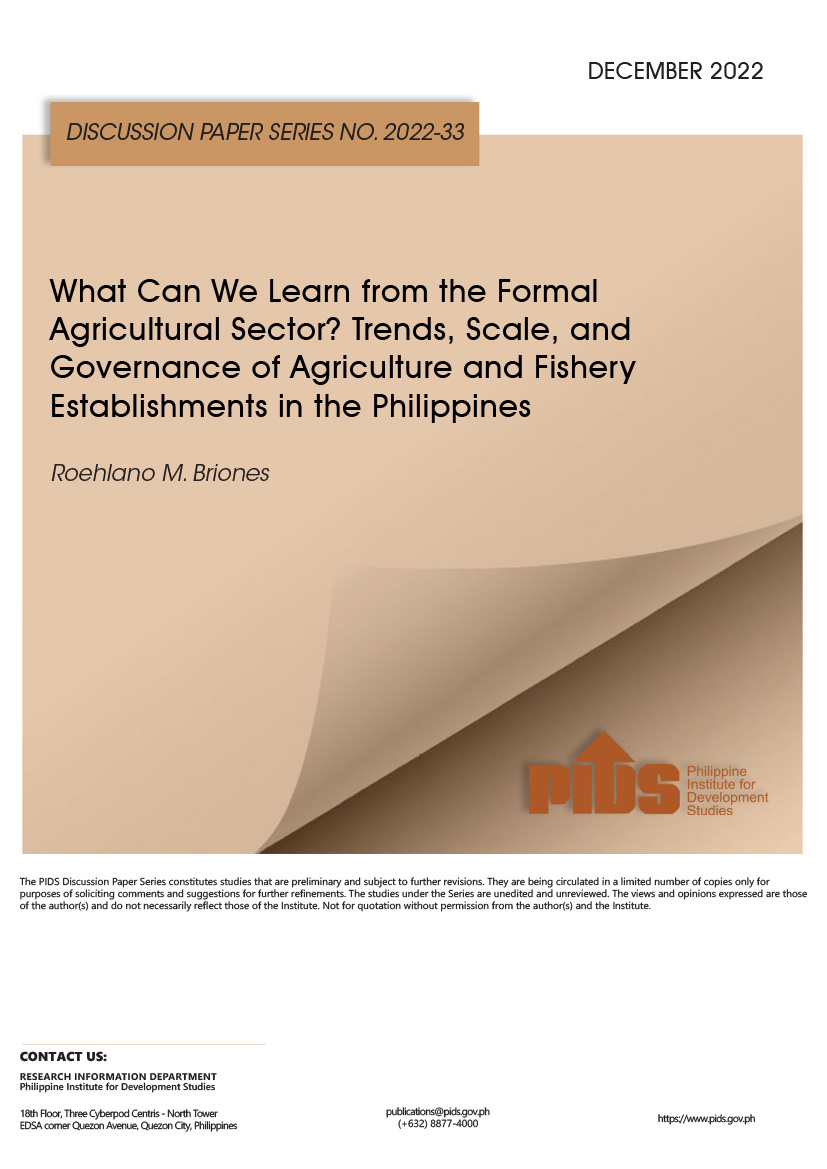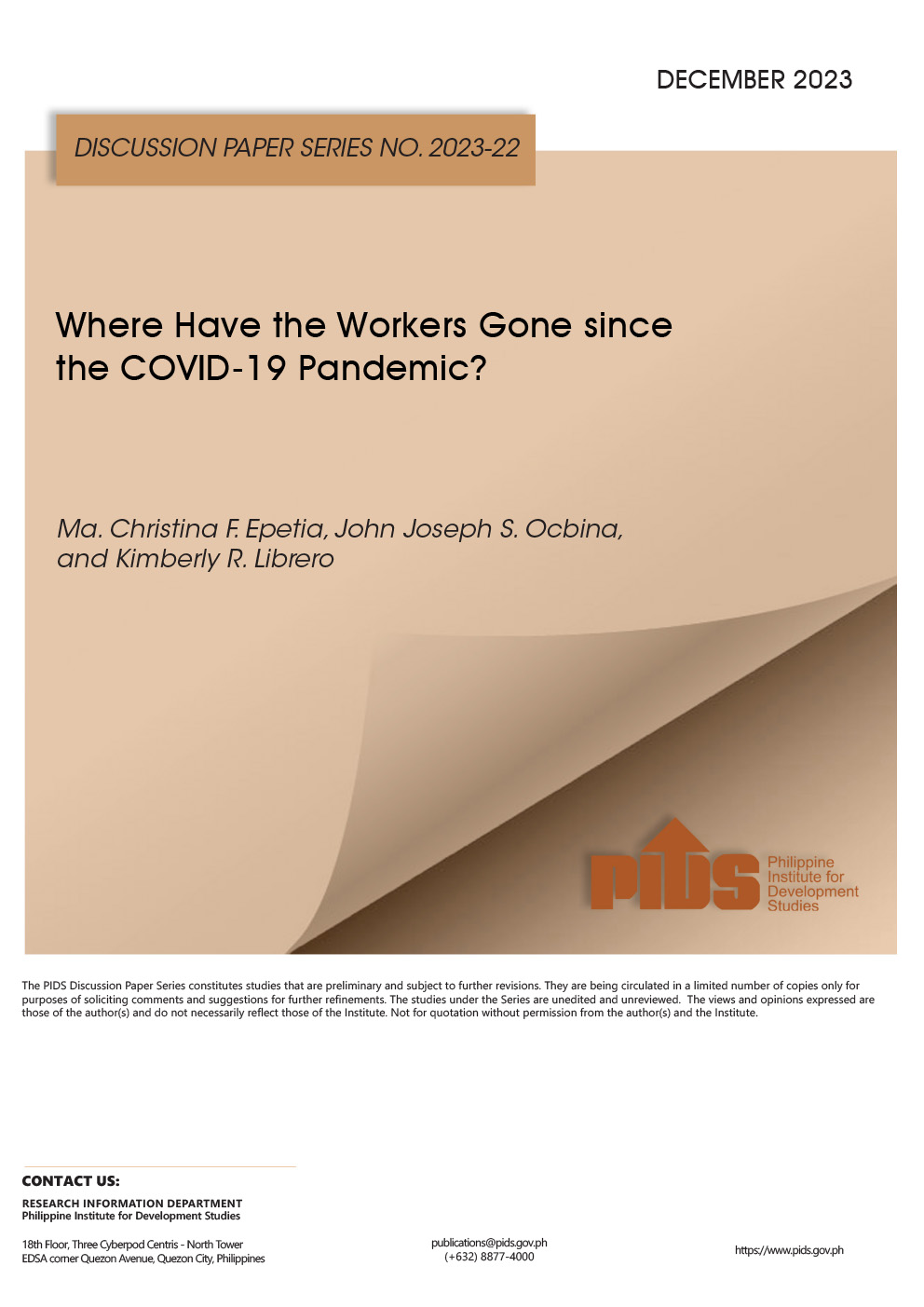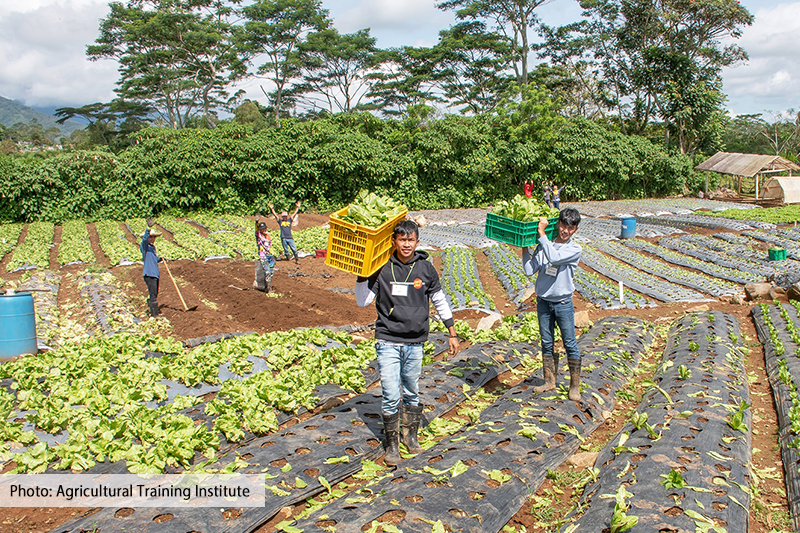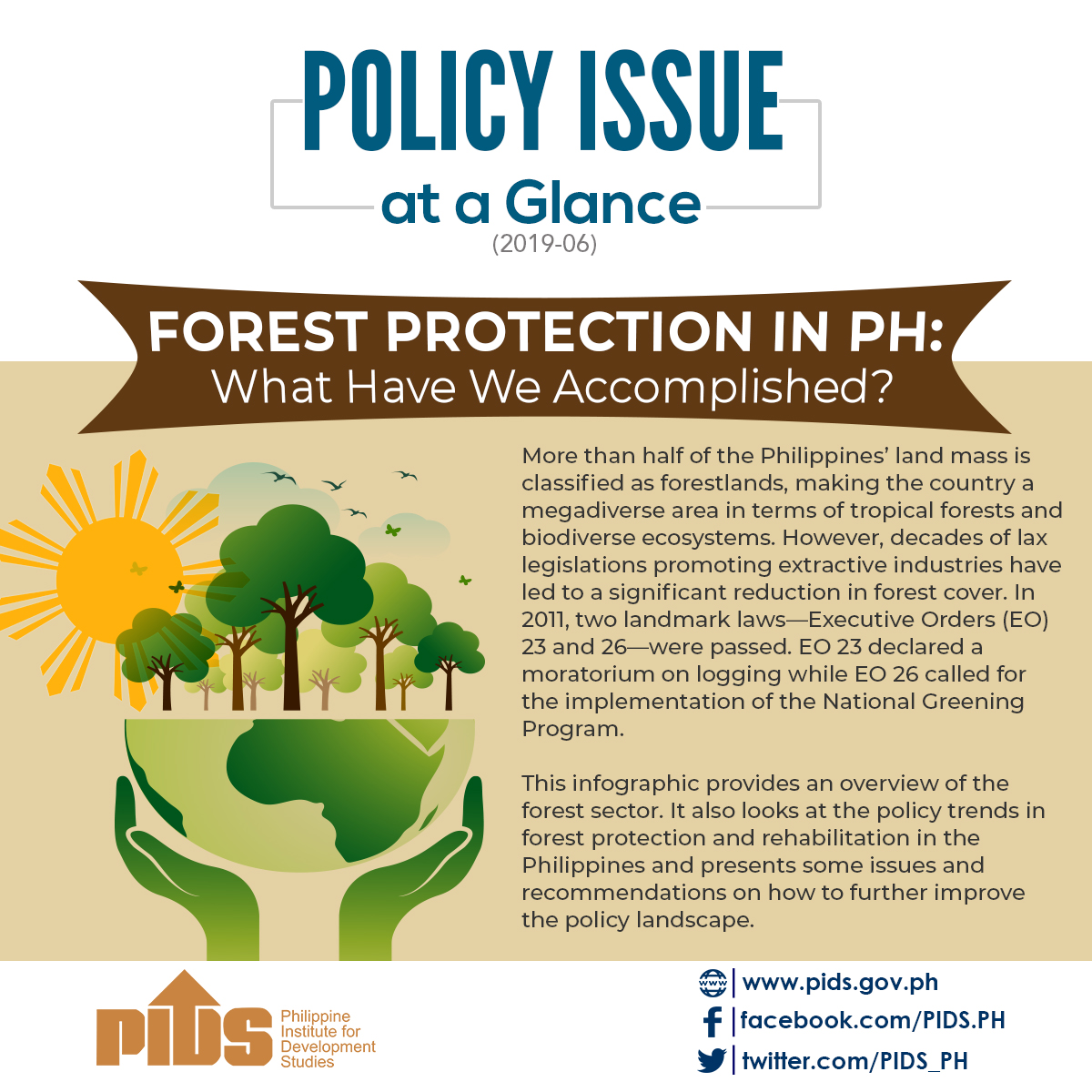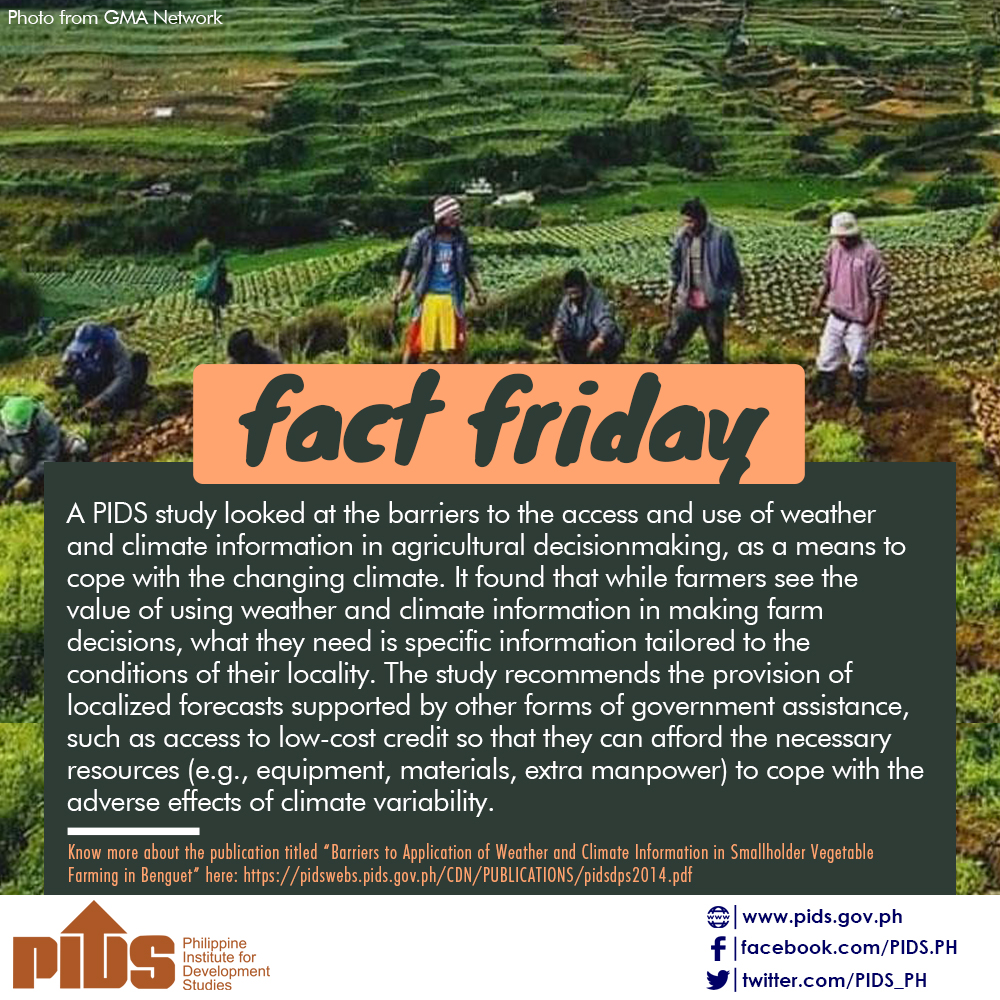THE COUNTRY’S agriculture production is expected to have improved last quarter from the preceding three months and a year ago as El Niño fizzled out, officials and economists said in interviews earlier this week, signaling some support for overall third-quarter economic growth.
“Definitely, ‘yung third-quarter growth ng agriculture will be greater than... last year,” Agriculture Secretary Emmanuel F. Piñol said in a phone interview on Tuesday when asked for estimates on July-September performance.
“[N]akapagtanim tayo matapos ng (we were able to plant after) El Niño. Although naabutan ‘yung iba ng bagyo(some areas were affected by typhoons), it was a bountiful harvest.”
Farm output crawled by a nearly flat 0.04% in terms of value in the third quarter last year as El Niño started to make itself felt. Subsequent quarters saw year-on-year contractions in production, but the fall eased to 2.34% last quarter from January-March’s 4.53% as El Niño waned.
The government is scheduled to report third-quarter farm production data on Nov. 15, two days before it releases third-quarter gross domestic product (GDP) results. The agriculture sector has historically accounted for a third of the country’s jobs but contributed only a 10th to GDP.
Socioeconomic Planning Secretary Ernesto M. Pernia said last week that the economy could have grown 6.3-7.3% last quarter on increased state infrastructure spending and flat farm output that was still better than previous declines.
“It will be flat or smaller negative,” Mr. Pernia said by phone on Monday when asked for his expectation on third-quarter agriculture performance.
Economists shared his expectation, noting that the sector has been recovering from the drought that started to make an impact in the second quarter of 2015.
“[It] will be much better than the second quarter because of the conclusion of the El Niño and the resumption of the monsoon rain, except for the typhoons... we’re on our way to recovery,” said Roehlano M. Briones, senior research fellow at the state think-tank Philippine Institute for Development Studies.
“I won’t be surprised if it’s 2% or 3% or even more” for the third quarter, he added.
Guian Angelo S. Dumalagan, market economist at the Land Bank of the Philippines, gave a -1% estimate for the farm sector’s third-quarter performance, saying in an e-mail: “The rate of decline... might be softer than the second quarter’s 2.34% fall due to the waning impact of El Niño and relatively fewer devastating storms during the period.”
Looking ahead, Mr. Piñol said the year may still end with some contraction due to successive storms that have hit the country this semester. “We will not be able to really expect positive growth for fourth quarter this year due to two consecutive typhoons that hit the country last month,” he said, referring to typhoons Karen and Lawin (known internationally as “Sarika” and “Haima”, respectively) that wreaked at least P11.34 billion worth of damage on the agriculture sector.
Mr. Piñol sidestepped a question on his department’s full-year target for the sector, saying only: “Talagang di masyado maganda kasi (Performance is really not so good because) we were led down by the first and second quarters.”
The previous administration, which stepped down last June 30, had projected a 3-3.5% growth for agriculture production this year.
Land Bank’s Mr. Dumalagan said: “In the fourth quarter, agricultural production might drop at a sharper rate of 3% due to the damage” caused by the two typhoons in October.
“Overall, farm output this year might be smaller than last year’s level and a full-year drop of 3% would not be unusual,” Mr. Dumalagan said, referring the sector’s marginal 0.11% annual growth in value of output to P788.798 billion last year.
For Ariel T. Cayanan, the Agriculture department’s undersecretary for Operations, “[w]hatever we had before, we want to at least ma-minimum natin ‘yun (make that the minimum).”
“But if we can go far as to increase it, okay ‘yun,” Mr. Cayanan told reporters on the sidelines of a Monday press briefing in Quezon City, adding that the department was able to prepare for El Niño “because El Niño is no longer a phenomenon -- it’s the new norm...”
Mercedita S. Sombilla, a director of the National Economic and Development Authority, said separately by phone that while the agriculture sector could still grow this year, “[d]efinitely, di natin mami-meet ang 3% (we cannot meet the 3% set by the past administration).”//
“Definitely, ‘yung third-quarter growth ng agriculture will be greater than... last year,” Agriculture Secretary Emmanuel F. Piñol said in a phone interview on Tuesday when asked for estimates on July-September performance.
“[N]akapagtanim tayo matapos ng (we were able to plant after) El Niño. Although naabutan ‘yung iba ng bagyo(some areas were affected by typhoons), it was a bountiful harvest.”
Farm output crawled by a nearly flat 0.04% in terms of value in the third quarter last year as El Niño started to make itself felt. Subsequent quarters saw year-on-year contractions in production, but the fall eased to 2.34% last quarter from January-March’s 4.53% as El Niño waned.
The government is scheduled to report third-quarter farm production data on Nov. 15, two days before it releases third-quarter gross domestic product (GDP) results. The agriculture sector has historically accounted for a third of the country’s jobs but contributed only a 10th to GDP.
Socioeconomic Planning Secretary Ernesto M. Pernia said last week that the economy could have grown 6.3-7.3% last quarter on increased state infrastructure spending and flat farm output that was still better than previous declines.
“It will be flat or smaller negative,” Mr. Pernia said by phone on Monday when asked for his expectation on third-quarter agriculture performance.
Economists shared his expectation, noting that the sector has been recovering from the drought that started to make an impact in the second quarter of 2015.
“[It] will be much better than the second quarter because of the conclusion of the El Niño and the resumption of the monsoon rain, except for the typhoons... we’re on our way to recovery,” said Roehlano M. Briones, senior research fellow at the state think-tank Philippine Institute for Development Studies.
“I won’t be surprised if it’s 2% or 3% or even more” for the third quarter, he added.
Guian Angelo S. Dumalagan, market economist at the Land Bank of the Philippines, gave a -1% estimate for the farm sector’s third-quarter performance, saying in an e-mail: “The rate of decline... might be softer than the second quarter’s 2.34% fall due to the waning impact of El Niño and relatively fewer devastating storms during the period.”
Looking ahead, Mr. Piñol said the year may still end with some contraction due to successive storms that have hit the country this semester. “We will not be able to really expect positive growth for fourth quarter this year due to two consecutive typhoons that hit the country last month,” he said, referring to typhoons Karen and Lawin (known internationally as “Sarika” and “Haima”, respectively) that wreaked at least P11.34 billion worth of damage on the agriculture sector.
Mr. Piñol sidestepped a question on his department’s full-year target for the sector, saying only: “Talagang di masyado maganda kasi (Performance is really not so good because) we were led down by the first and second quarters.”
The previous administration, which stepped down last June 30, had projected a 3-3.5% growth for agriculture production this year.
Land Bank’s Mr. Dumalagan said: “In the fourth quarter, agricultural production might drop at a sharper rate of 3% due to the damage” caused by the two typhoons in October.
“Overall, farm output this year might be smaller than last year’s level and a full-year drop of 3% would not be unusual,” Mr. Dumalagan said, referring the sector’s marginal 0.11% annual growth in value of output to P788.798 billion last year.
For Ariel T. Cayanan, the Agriculture department’s undersecretary for Operations, “[w]hatever we had before, we want to at least ma-minimum natin ‘yun (make that the minimum).”
“But if we can go far as to increase it, okay ‘yun,” Mr. Cayanan told reporters on the sidelines of a Monday press briefing in Quezon City, adding that the department was able to prepare for El Niño “because El Niño is no longer a phenomenon -- it’s the new norm...”
Mercedita S. Sombilla, a director of the National Economic and Development Authority, said separately by phone that while the agriculture sector could still grow this year, “[d]efinitely, di natin mami-meet ang 3% (we cannot meet the 3% set by the past administration).”//

